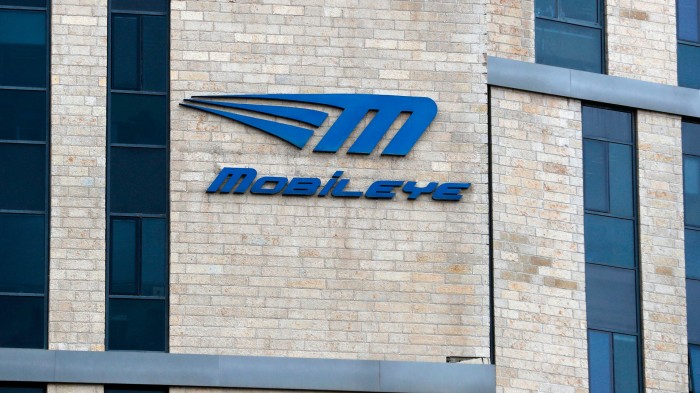Intel’s $15 Billion Mobileye Buyout Puts It in the Autonomous Car Driver’s Seat

Intel has announced that it plans to acquire the autonomous car hardware firm Mobileye for a cool $15 billion. It’s a weighty sum, but the purchase gives Intel cutting-edge machine-learning technology that lies at the center of the nascent autonomous car industry.
The buyout of Mobileye, one of our 50 Smartest Companies of 2016, is the second largest ever made by Intel. It’s also by far the largest autonomous car acquisition to date, and another sign that the self-driving vehicle sector looks set to explode in the coming years.
Many car manufacturers already use Mobileye’s hardware to power their autonomous systems, giving the company a position of power throughout the industry. Intel will now hope to combine that with its own chip-making chops to capture a sizable chunk of the autonomous car market just as it takes off. If it can do that, it will become a formidable competitor to chip makers like Nvidia and Qualcomm, who are already in the robotic car space.
Based in Israel, Mobileye was founded in 1999 and has since provided sensors, processing hardware, and software to automakers so that their cars can sense the world around them. The company's technology is already present in high-end cars made by the likes of Audi, General Motors, and Ford that can, for instance, automatically maintain a safe distance behind other cars on the road.
Mobileye’s products were also used by Tesla to power its Autopilot self-driving system. But the two companies stopped working with each other last summer after the automaker tried to blame Mobileye's vision hardware for a fatal Tesla crash.
Around the same time, Mobileye entered into a collaboration with Intel and BMW, later confirming that the trio expected to start testing cars sometime this year. The project aims to create autonomous systems that could be used by other automakers, and not just BMW.
But Mobileye hasn't been entering into those endeavors merely as a sensor manufacturer. As we recently described when we named reinforcement learning one of our 10 breakthrough technologies of the year, the firm is one of several companies leading a charge to develop computational systems that can program themselves, and it’s those systems that will be tested in BMW vehicles later this year.
The company has also developed a complex simulation system where self-driving can learn how to drive better by running through scenarios computationally, rather than in real life. And it’s also built a platform that will allow car manufacturers to share and merge road data in order to quickly create high-definition maps, a scheme which both BMW and Volkswagen have already signed up to.
Such initiatives position Mobileye as a pivotal organization in the autonomous car sector, and now Intel can take advantage of them. Whether they’re worth $15 billion? That will depend on how the rest of the self-driving journey pans out.
(Read more: Reuters, “An Ambitious Plan to Build a Self-Driving Borg,” “10 Breakthrough Technologies: Reinforcement Learning,” “Tesla Is Losing the Supplier of Autopilot’s Brain”)
Keep Reading
Most Popular
Large language models can do jaw-dropping things. But nobody knows exactly why.
And that's a problem. Figuring it out is one of the biggest scientific puzzles of our time and a crucial step towards controlling more powerful future models.
The problem with plug-in hybrids? Their drivers.
Plug-in hybrids are often sold as a transition to EVs, but new data from Europe shows we’re still underestimating the emissions they produce.
Google DeepMind’s new generative model makes Super Mario–like games from scratch
Genie learns how to control games by watching hours and hours of video. It could help train next-gen robots too.
How scientists traced a mysterious covid case back to six toilets
When wastewater surveillance turns into a hunt for a single infected individual, the ethics get tricky.
Stay connected
Get the latest updates from
MIT Technology Review
Discover special offers, top stories, upcoming events, and more.